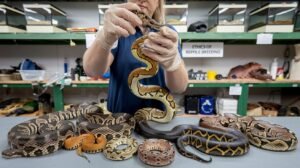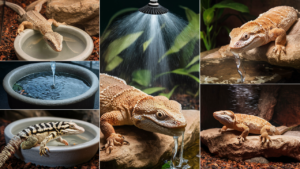In this article, we explore essential care techniques for small animals, including dog crate training, alternatives for cat scratching, dietary essentials for ferrets, and tips for selecting hamster wheels. Each section aims to provide pet owners with practical advice to enhance pet well-being and strengthen the human-animal bond.
Dog Crate Training Techniques
Dog crate training is an essential aspect of responsible dog ownership. It provides a safe space for your dog, serving not only as a personal retreat but also as a training tool. Proper crate training can help with housebreaking by teaching your dog to control its bladder and bowels, thereby reducing indoor accidents. Furthermore, it aids in minimizing anxiety, as dogs often feel secure in a confined space.
Many misconceptions surround the use of crates. Contrary to popular belief, crates are not tools for punishment; they should be associated with positive experiences. A well-sized crate should allow your dog to stand, turn around, and lie down comfortably. An oversized crate might encourage soiling, as the dog may perceive one side as a bathroom.
To successfully implement crate training, introduce your dog to the crate gradually, using treats and praise to foster a positive association. Start with short intervals and progressively increase the duration. The crate’s location is vital; it should be in a quiet but not isolated area of the home.
Remember that crate training’s goal is to provide security, not confinement. When correctly applied, it becomes an invaluable tool for dog owners, enhancing both training and emotional well-being.
Alternatives for Cat Scratching
Understanding feline instincts is essential for redirecting scratching behavior. Offer various **scratching posts**, **pads**, and **furniture protectors** to satisfy your cat’s needs. Encourage appropriate scratching through **training methods** and reward positive behavior. When selecting tools, consider the material and height, ensuring they mimic natural surfaces.
Ferret Diet Essentials
Ferrets require a high-protein and high-fat diet, ideally from quality ferret kibble or raw meats. Avoid carbohydrates and sugary snacks. Hydration is crucial, so provide fresh water daily. Feed adult ferrets twice daily, adjusting portions based on activity levels to maintain a healthy weight.
Selecting the Right Hamster Wheel
Selecting the right hamster wheel is vital for your pet’s health. Consider the wheel’s size to ensure it accommodates your hamster’s breed comfortably. Materials should be safe, sturdy, and easy to clean. Look for designs that minimize noise to prevent disruptions. Safety features, like solid surfaces and enclosed shapes, protect tiny feet from injury. A suitable wheel promotes exercise, stimulating your hamster’s mental and physical well-being, ultimately contributing to a happier life.
Conclusions
In conclusion, understanding pet care—from crate training dogs, finding suitable scratching alternatives for cats, providing a balanced diet for ferrets, to selecting the best hamster wheel—can significantly improve the lives of our beloved companions. Implementing these practices fosters healthier and happier pets, while strengthening the bond we share with them.



